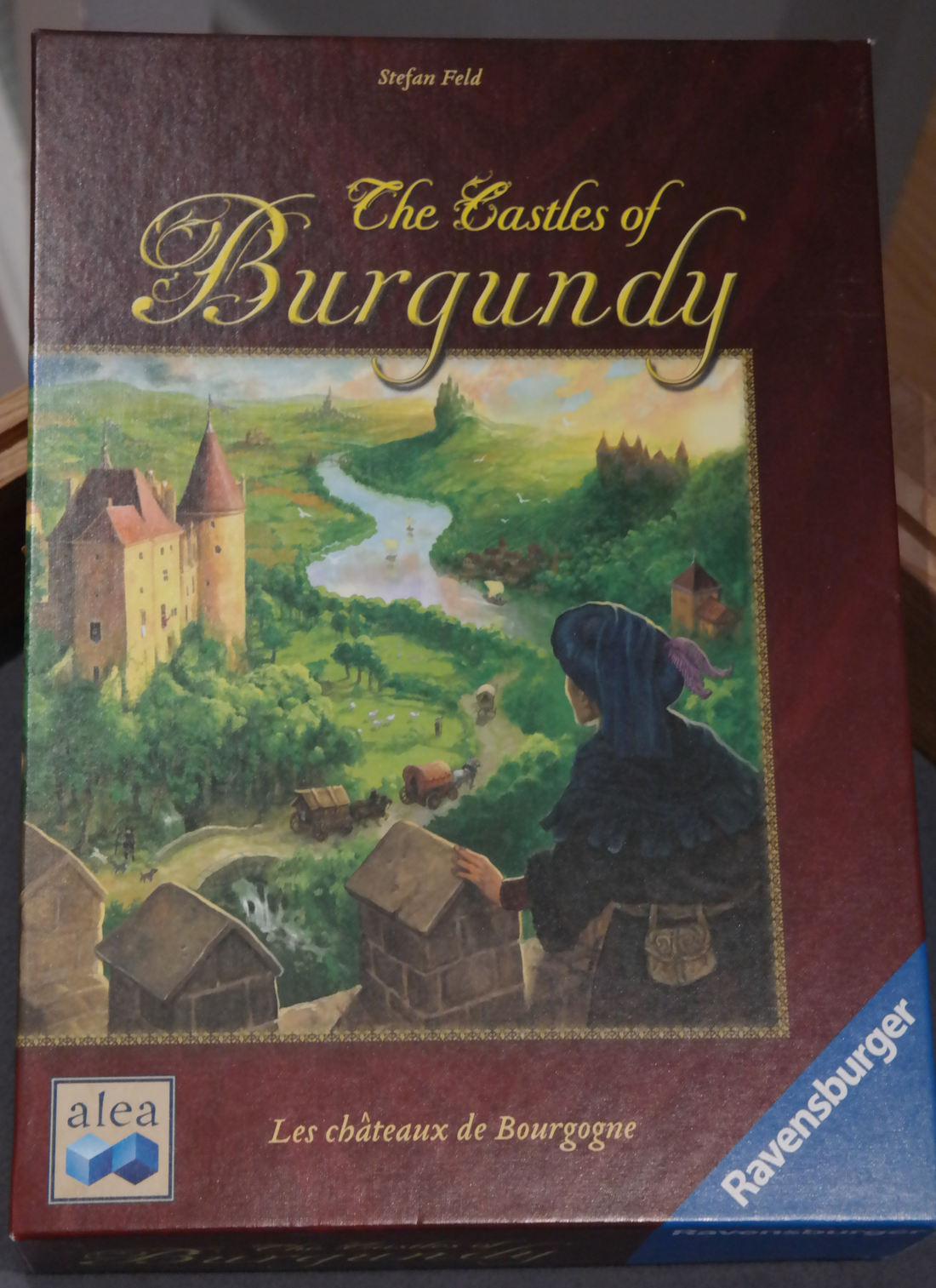As the Meeple Design website has been live for some time now we thought it was about time we added the obligatory 'favourite board games' post. It should give an idea about our thought process behind buying new board games and hopefully a bit of insight into why we started Meeple Design. This will be for my top 5 games and Hannah will write her own list for her top 5 games. I am sure the list will be different and even if there are crossovers I think the reason we like the games will vary as well.
It is difficult to pick my favourite 5 games, as there are so many that I enjoy playing and a few that I need to play more of before I can confidently say they are among my favourite games. The 5 games that I have picked are partly because they play well with 2 players and I play most often with 2 players, even pre-pandemic. It is quite clear from the 5 games that I have picked that I am a big fan of euro style games.
In order to provide a bit more detail about each game and why I like it, I will be publishing an article for each game (Check out the other articles on our blog page). They are in no particular order as it was difficult enough to narrow down to only 5 games. My top 5 games are:
In my opinion this is the worst looking game in my top 5. The artwork is generic, component quality low and colours look low saturation. In its defence, when in stock, the standard edition is a relatively low price game and for your money you get a lot of game. There are tokens a plenty and it is an extremely rewarding Euro game. Based on its looks, I can completely understand why someone would overlook it, I don’t even think the more recently released deluxe edition remedies the components quality or art. However, The Castles of Burgundy is designed by the prolific Stefan Feld which should be more than enough to indicate that this is a quality game. Although I am yet to play other Stefan Feld games, something a really need to remedy with this game making it into my top 5.

In The Castles of Burgundy, each player takes on the role of a French aristocrat using resources to improve their province which, being a Euro game, is obviously expressed by scoring more points than your opponent. Each player has a player mat representing their province consisting of a hexagonal grid where new resource buildings or landscapes can be placed or stored. The 2 to 4 players share a central board which contains the tile supply of province upgrade tiles and goods, and the points track. The centre of the board contains the various upgrade tiles, in different colours representing the different types of upgrade, and next to the upgrade tiles are the goods storage squares. Goods are stacked into 5 piles of 5 at the top of the board which also act as the round tracker. The game is divided into 5 phases with 5 rounds each. Also contained on the board is the turn order tracker, with the token the furthest to the right indicating the start player. At the end of the 5th phase and the end of game scoring phase, the player with the most points is the winner.
At the start of each round, players roll their 2 dice. The current start player rolls an additional white die, which adds a single good tile to the goods storage square as per the value indicated on the white die. Once the goods tile is placed then players can proceed with their turn, taking 2 actions (1 per dice). The actions available to the players are:
- Take a hexagonal tile from the central board: The player may take a tile from one of the central board supply locations with the location of the tile being equal to the die result used. The player can modify the die result by +1 or -1 by discarding a worker tile.
- Add a hexagonal tile into the estate: Tiles taken from the board are placed into a storage slot on the player board. From here the player can place a stored tile into their province and, once placed, perform the action associated with the tile. To place the tile the player must spend a die with a result matching the number on the estate hex and the tile must be the same colour as that on the player board. As with purchasing tiles a worker can be discarded to modify the die result by +1 or -1. The actions taken when placing a tile can range from collecting a free good, moving along the player turn track, passive abilities such as allowing discarded workers to modify die by +2 or -2 to scoring victory points. These actions allow for a huge variation of strategic decisions throughout the course of the game.
- Sell goods: the player may sell a stack of goods tiles whose die face matches one of the dice that was rolled. The player may adjust this die roll by + or – 1 by discarding one of their worker tiles. Each sold goods tile is worth 1 victory point per the number of people playing and, regardless of how many tiles are sold, the player also collects 1 silverling.
- Take 2 worker tiles: the player may take two worker tiles from the supply regardless of the number on the die face.
- Purchase a black tile: In addition to their two normal actions, the player may also purchase a black tile per phase for two silverlings. This special action can be performed at any time during the turn.

This is the first Euro game that we bought and one that we continue to play regularly. In my opinion, it requires the perfect amount of strategic thinking which is informed by the dice you roll. In a lot of ways the dice values you roll determine the strategy you go with during the game, which is great as it encourages you to try out different strategies each play. This could be annoying, but in The Castles of Burgundy every strategy is quite strong, & more importantly fun, and there are multiple ways to influence the dice roll. Some people may disagree with this point, but I think that there is a good amount of player interaction. You can’t directly impact a players board however the tiles you take can have a huge impact on your opponent so it is beneficial to try and be aware of your opponents game plan.
The only negative, I already mentioned, is that the artwork and component quality are not great but then the game is a relatively affordable medium weight Euro game. Also the turns are fast paced and you can play through the 5 phases surprisingly quickly, but that is at 2 player count. It has never been a game that I have wanted to play with more than 2 players as I think the downtime between turns could be a bit much, which seems to be another negative that other people often comment on. There are other Euro games that are much more suited to playing with 3 or more players.
As fans of The Castles of Burgundy we have created our own Meeple Design travel style and silhouette posters to decorate your gaming space with as well as unique apparel designs to wear at your next board gaming session. All of which are available exclusively from Meeple Design - check them out here
**Our blog is supported by fans of Meeple Design. If you buy through a link, we may earn an affiliate commission.**




